Star of captivating knowledge
You, most likely, have already heard about the educational center “Sirius”. Established in 2014 and created on the basis of the Olympic infrastructure, the center not only works with gifted children, but also raises the level of teachers and is looking for new forms of education. This summer I had the opportunity to teach a space vacation program there for two weeks. Under the cut, a tour of the center, a story about exactly what I was doing and household sketches. Only 56 photos on 18 megabytes.
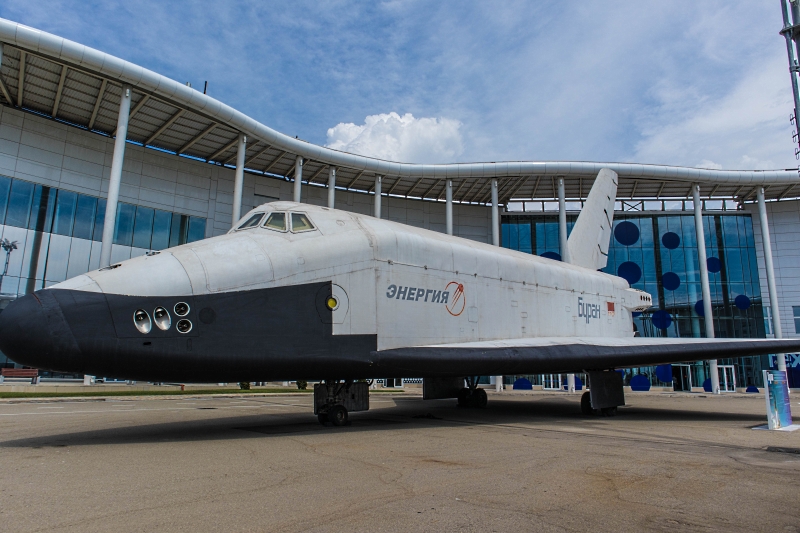
The science and art park of the educational center “Sirius” is located in the building of the former Main Media Center of the 2014 Olympics and is comparable in size to a rather big plant - the width of the facade is four hundred meters, and the scale is best seen in the satellite image.
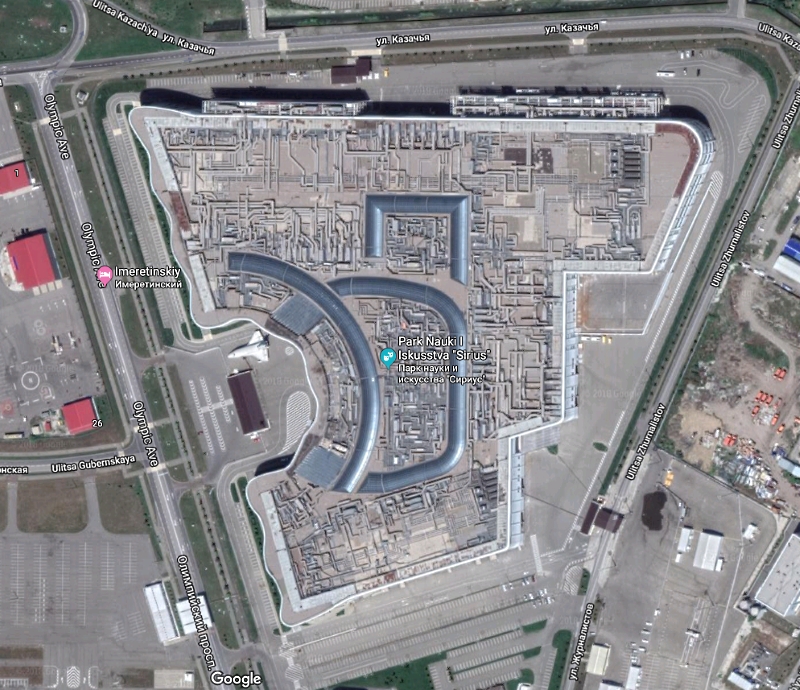
Pay attention to the dark stripes - this is the glass roof of the galleries. In 2017, a 0.03 product was installed at the main entrance - the Burana complex test stand.
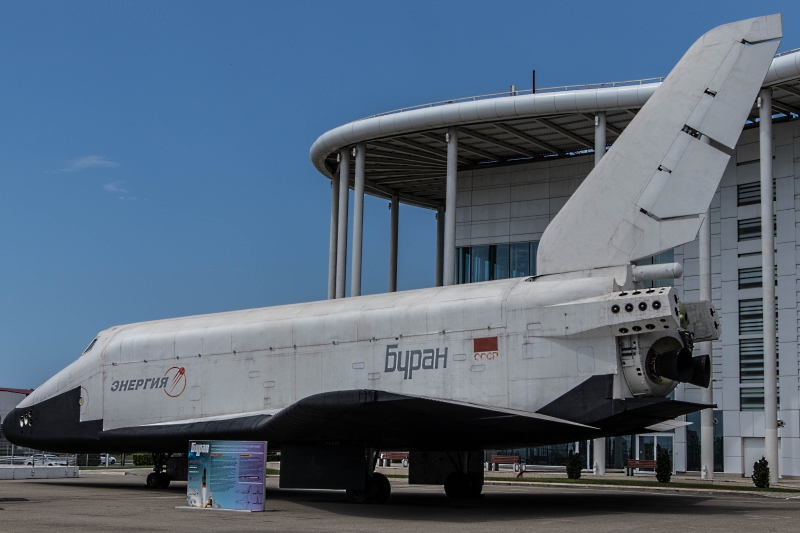
“Complex booth” means that this instance was equipped with a standard set of equipment and conducted a huge amount of testing, catching 21,168 bugs.
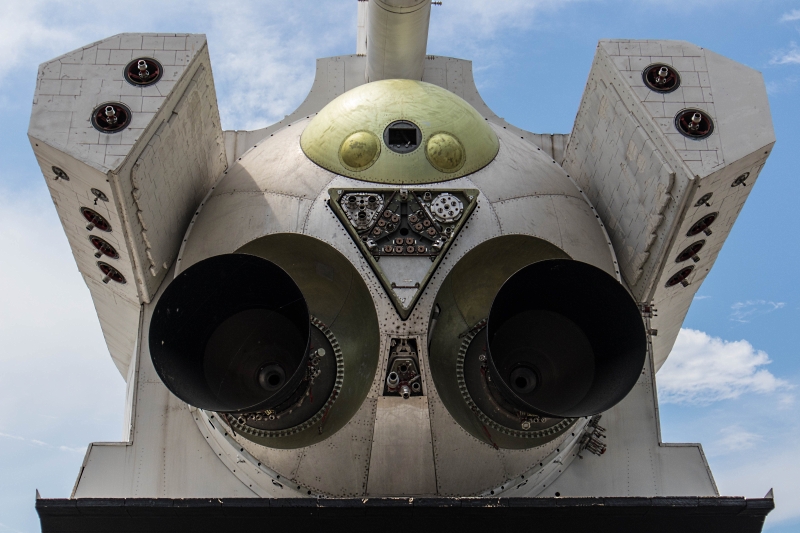
OK-KS - one of the best-preserved ships and program layouts. For example, “Buran” on VDNH is assembled from three different products. And here except that the absence of thermal protection and orientation engines is striking. For convenience of testing, several manholes were made in the stand, which were absent in flight copies. One of them is located in the wheel housing and is closed with a padlock.
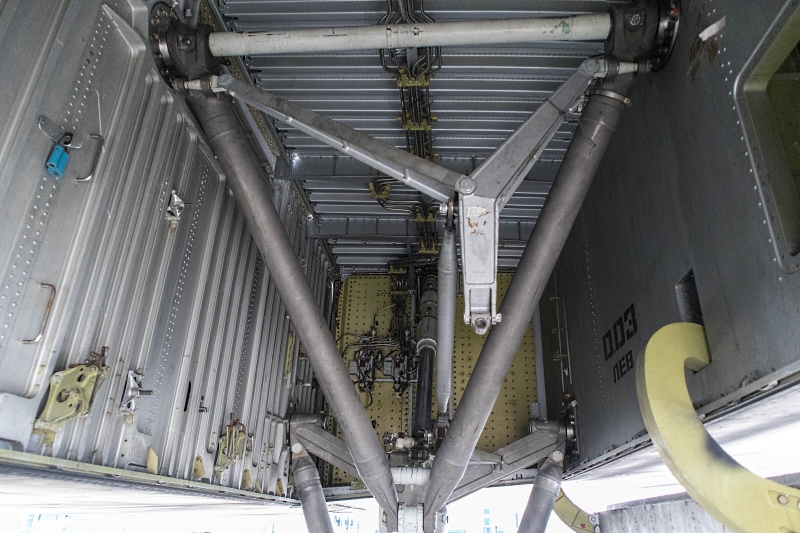
In the left (north) vestibule next to the abstract satellite mockup is the mockup of the second-stage engine (central unit) of the RD-0120 booster rocket. The center is actively filled with expositions and various artifacts, for example, the white border on the left was the entrance to the module of geospatial technologies, which is replaced by “Genetics and Life Sciences”.
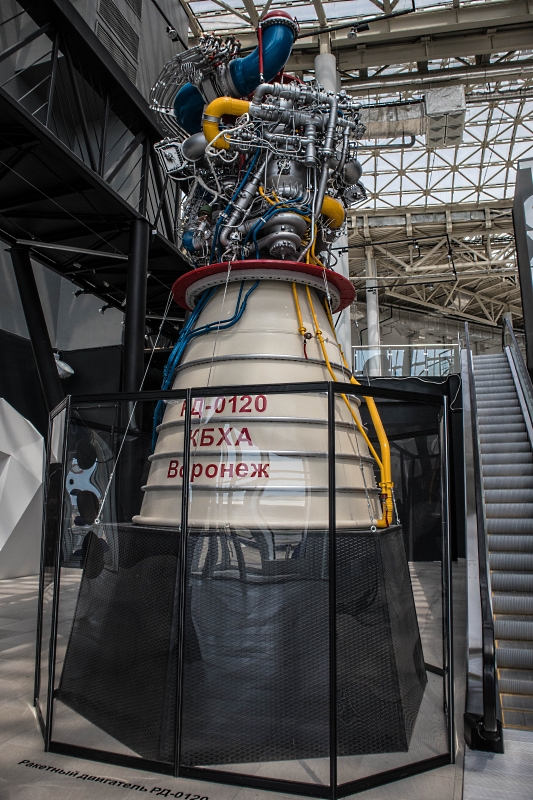
We rise to the second floor. Here are the planetarium and the full-size layout of the Clipper spacecraft.
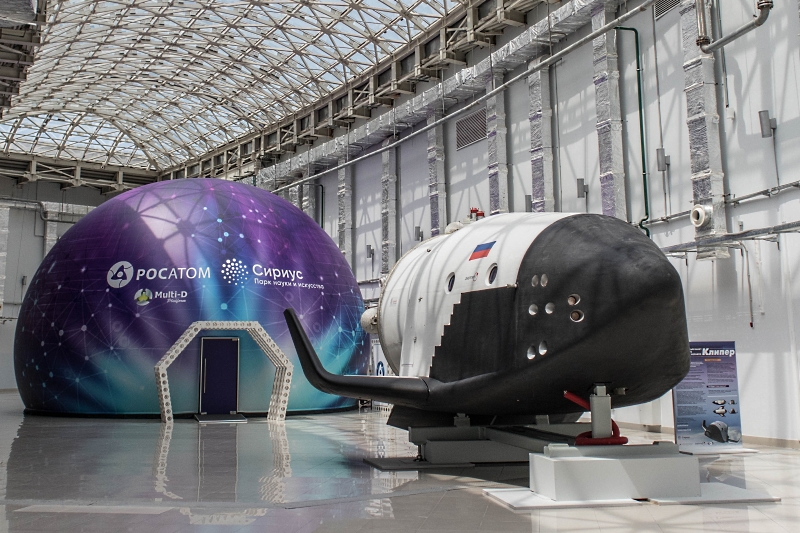
View of the "Clipper" from behind.
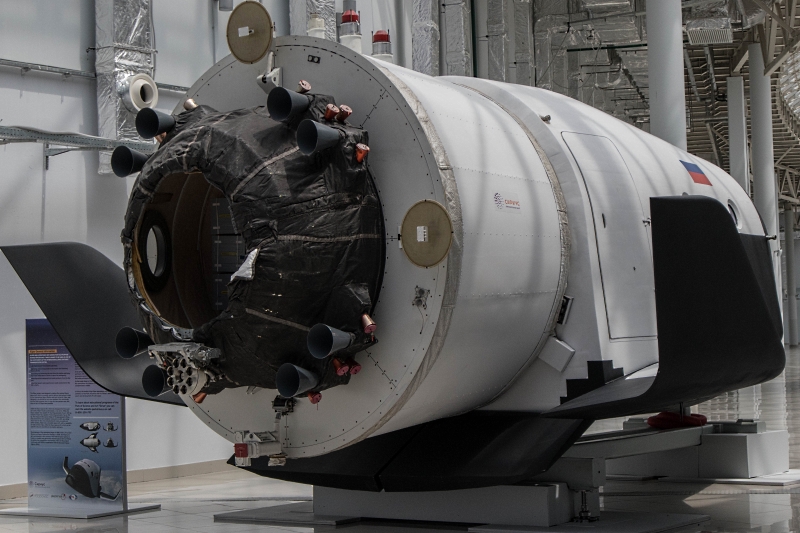
There is still plenty of space, and the second floor is subtly similar to the airport. Glare tile floor create the illusion of the pool.
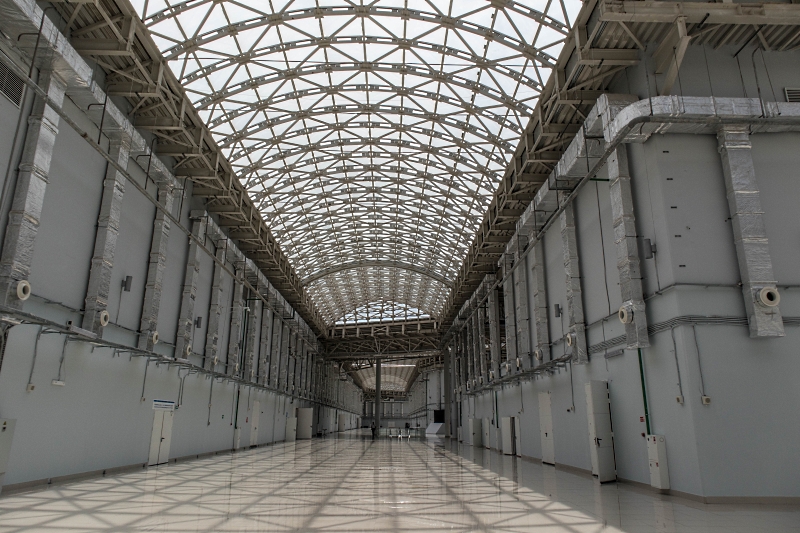
The industrial scale of the premises allows for events with hundreds and thousands of participants.
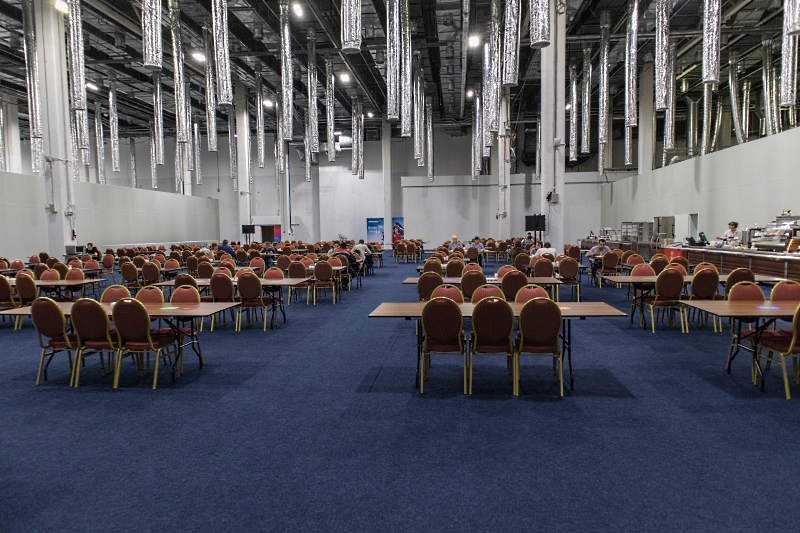
Go back to the first floor. The diagram of the audience once again clearly shows the size of the center. Alpha - biohacking laboratories and nanotechnologies, Beta prototyping, circuit engineering, space and vehicles, Gamma - painting, pottery and mosaic, Delta - audiences and conference rooms, Sigma - exhibitions.
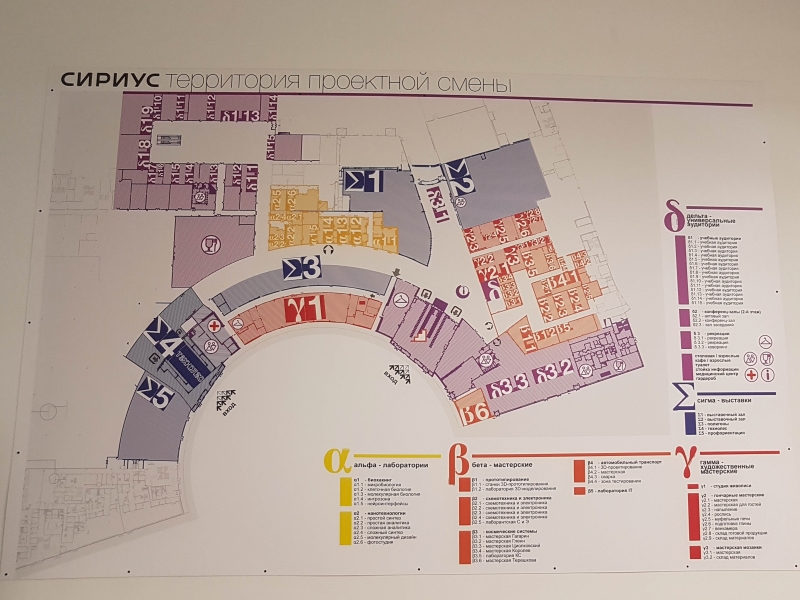
We begin, of course, with space laboratories. In the corridors are models - icebreakers, reactors, "Luna-16", "Energy", "Soyuz", "Proton" and "Angara".
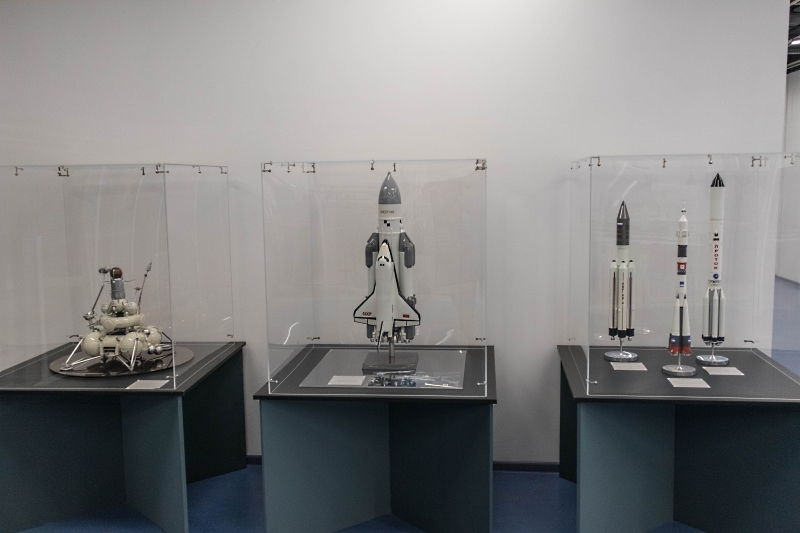
Autographs of cosmonauts who visited the center.
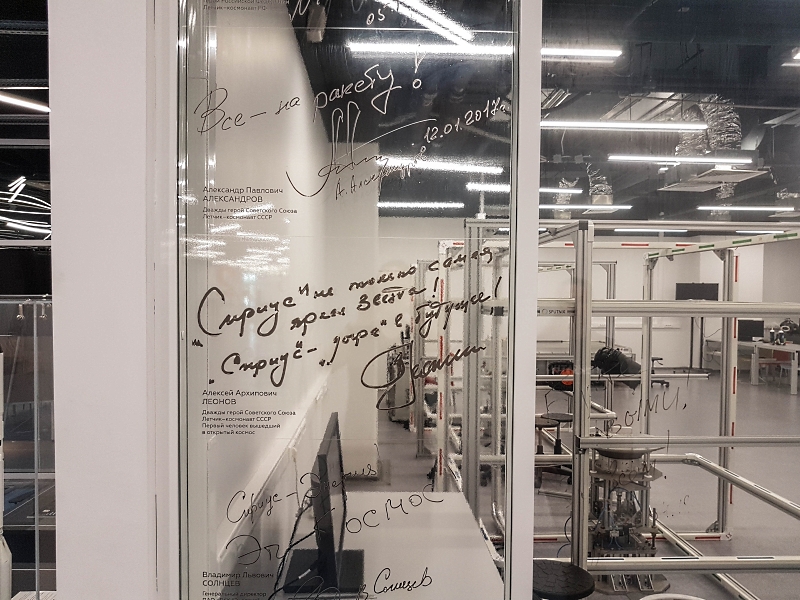
Surprise and admiration causes equipping laboratories in general, and space - in particular. With the help of Sputnix, they installed complete equipment for testing spacecraft. Two stands allow you to check the orientation systems - a simulator of a magnetic field and a searchlight playing the role of the Sun, create an environment similar to what the satellite will collide in orbit, and the aerosolve simulates conditions when the satellites turn in weightlessness.

Aerostol removes friction in two planes, allowing you to experiment with the operation of satellite engines.
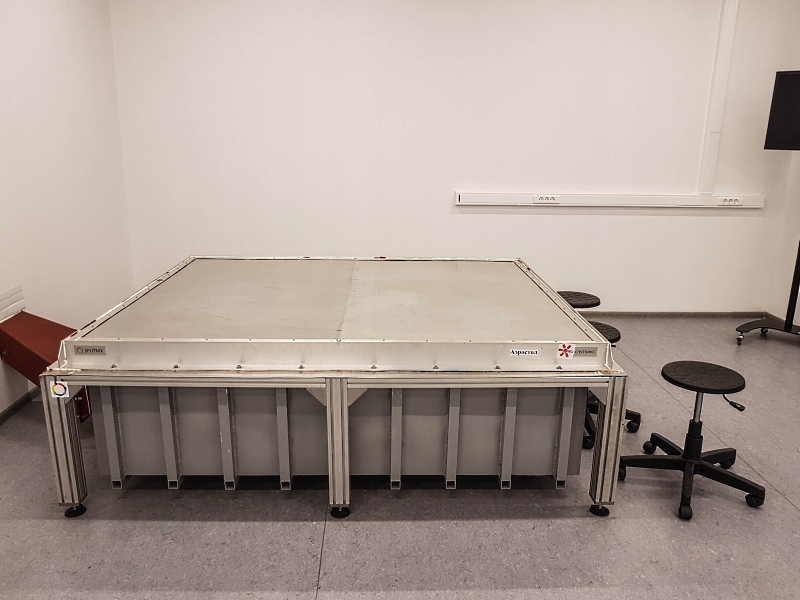
And this is a stand with engines on compressed gas, which moves along the aerostol.

Thermal chamber allows you to check the readiness of the satellite to work in a vacuum.
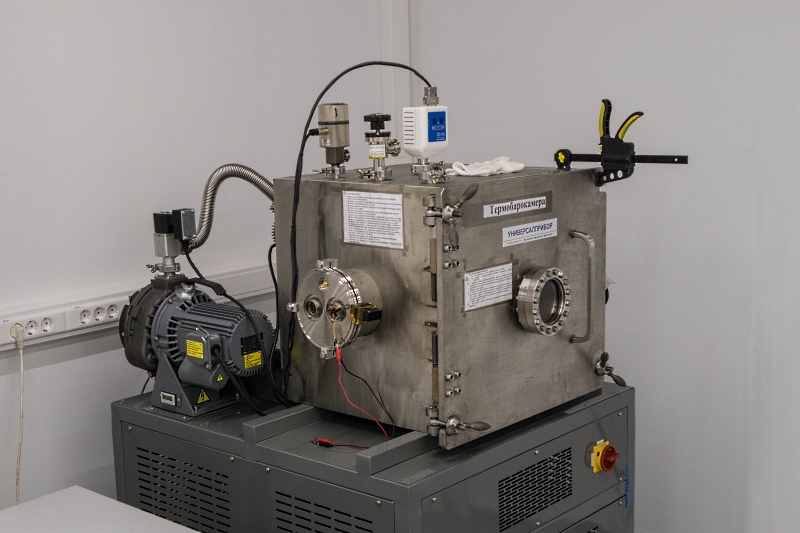
Shaker - the load when removing the satellite on the launch vehicle.

From the project shift, which lasts a month, remained mock satellites. Wooden shells on adhesive tape with hot melt do not reduce the value of the knowledge and experience gained on real electronics. And after visiting this laboratory, you are not surprised at the news about the launch with the ISS created by students of “Sirius” and tested on this very equipment of real satellites.
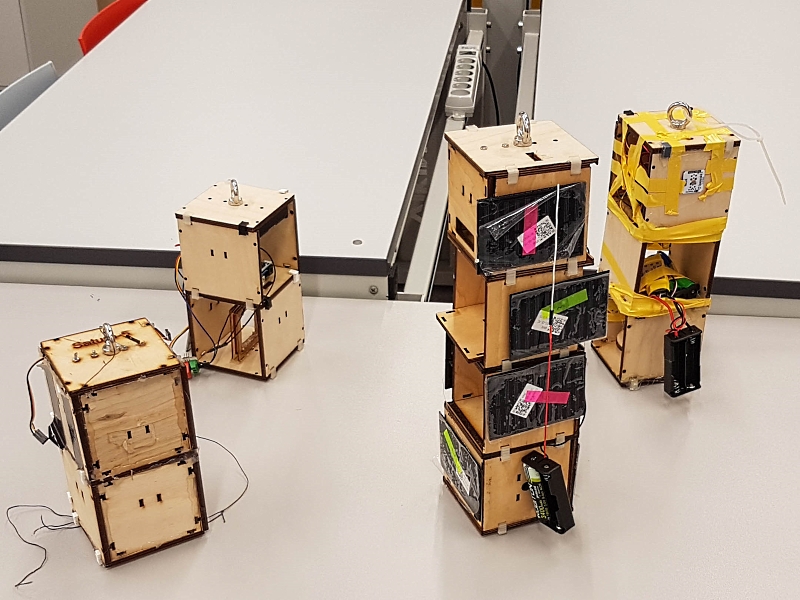
Go to the prototyping lab. Here you can quickly and in various ways realize some great idea in the material. 3D printers, a whole battery, and, as I did not pass by, at least one of them constantly printed.

In some cases, it will be better to cut a part than to print, for this there is a high-precision CNC engraving-milling machine.
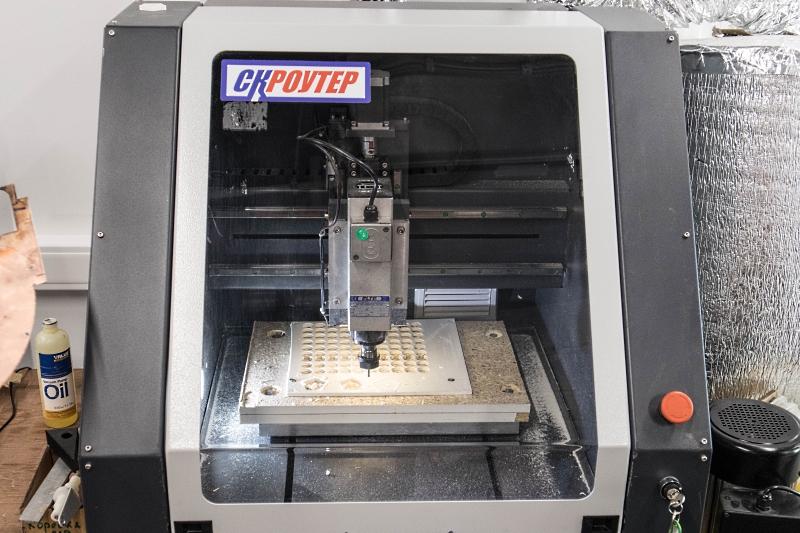
The alternative is a laser cutting machine, wooden parts with characteristic dark edges are everywhere, it obviously works a lot.
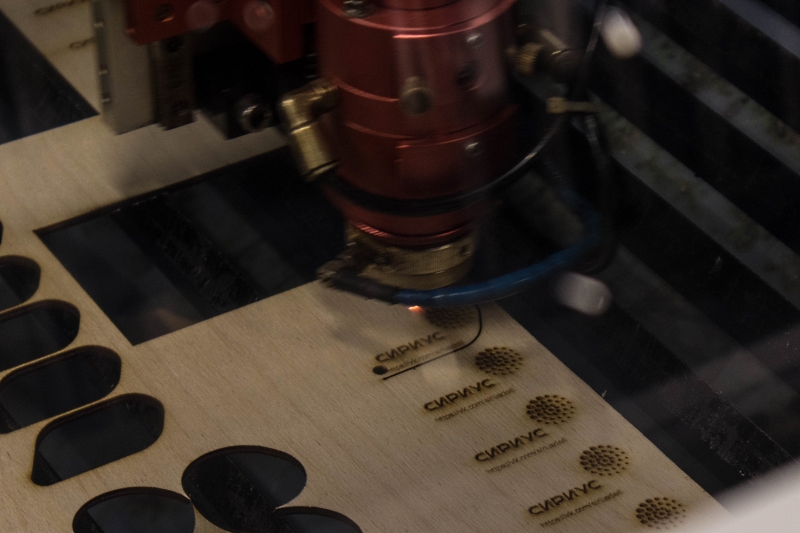
A local landmark is a homemade 3D clay printer. As I was told, they tried to print it with food, but something normal turned out so far only with chocolate.
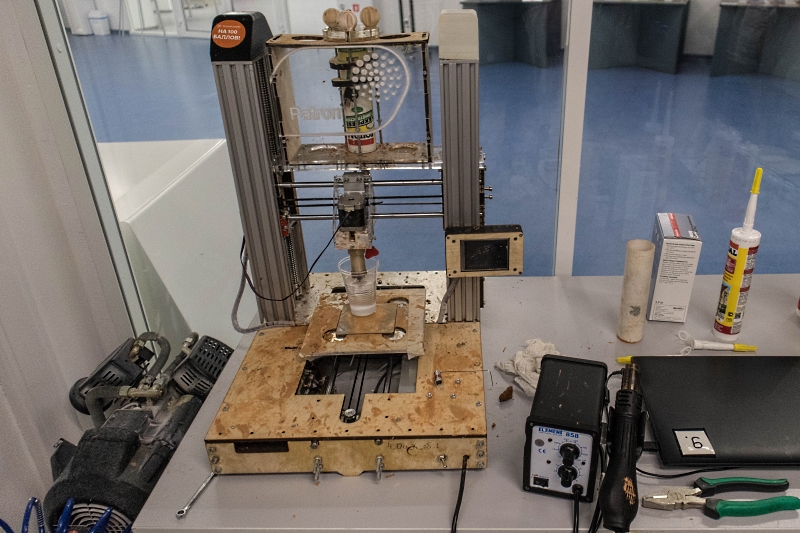
On the shelves are experiments with rare delta kinematics of 3D printers.
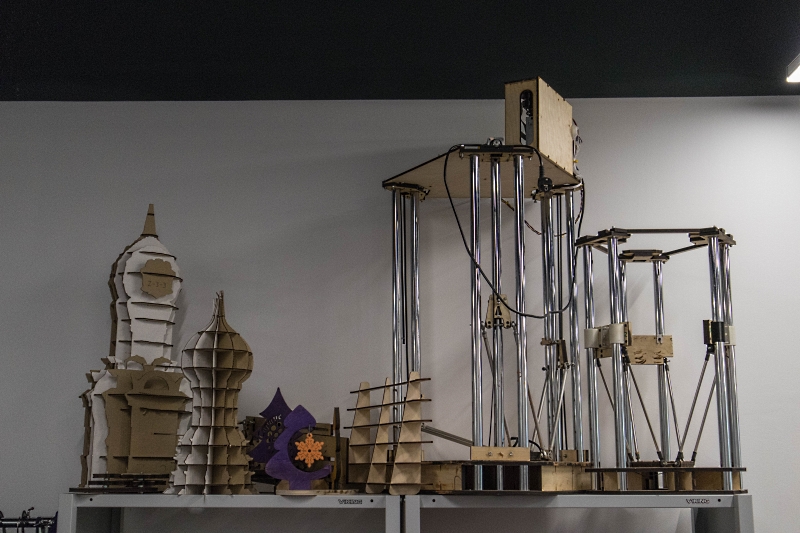
Go to the pottery lab. Here are the results of 3D clay printing, demonstrating the possibility of creating objects with a complex surface.
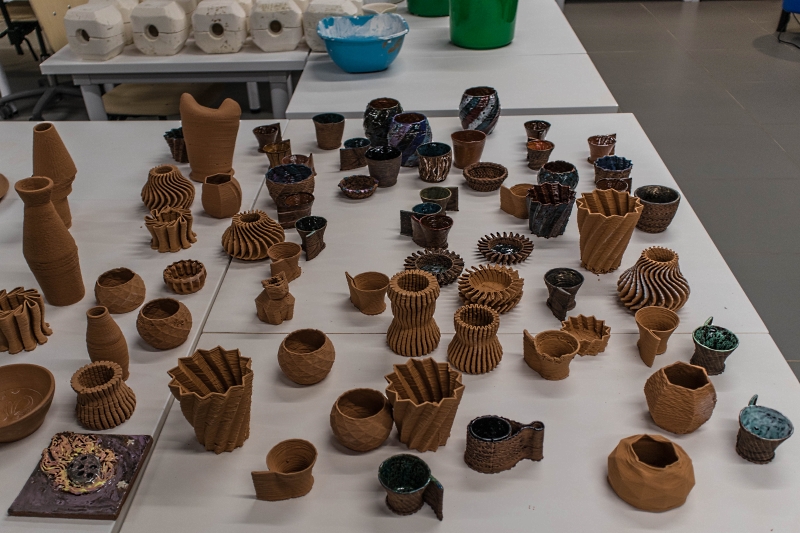
On a close-up, the layers with which the material was applied are clearly visible.
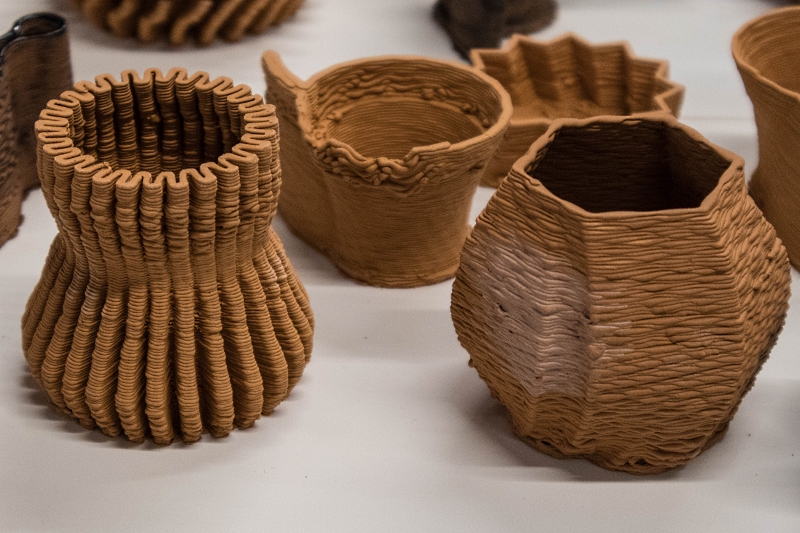
The audience with pottery circles.
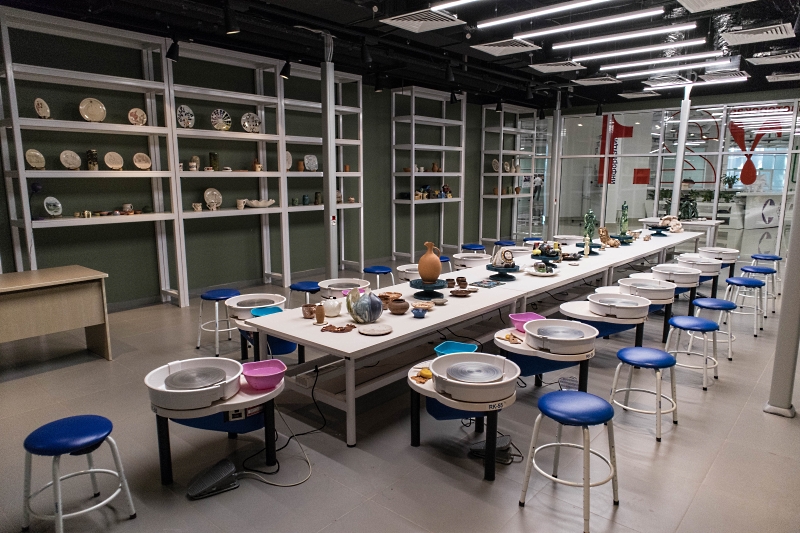
The results of a more traditional production process. Cute seals and a plate with the words "There is no sense in fear of heights, it makes sense to learn to fly."
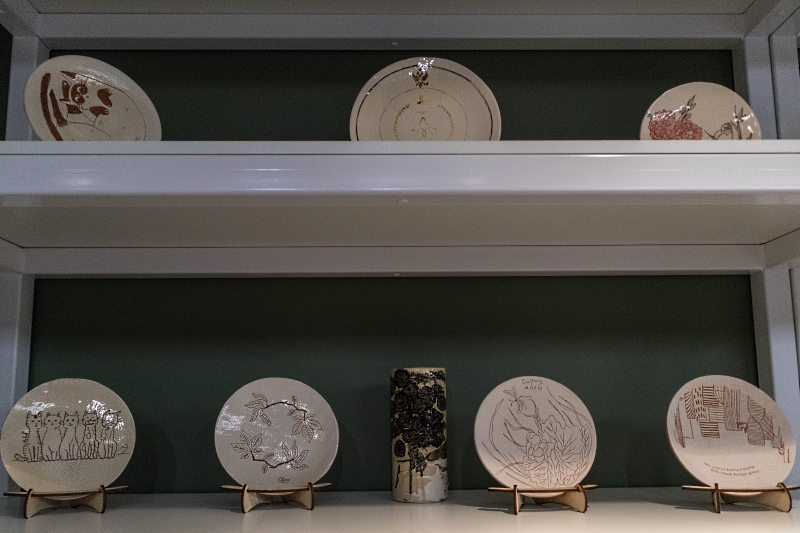
Production is almost waste-free - unsuccessful experiments can be loaded into a machine similar to a meat grinder, and turned into a homogeneous mass, from which to sculpt something new.

And here the products are dried (the extreme closet on the right) and burned (all the rest).
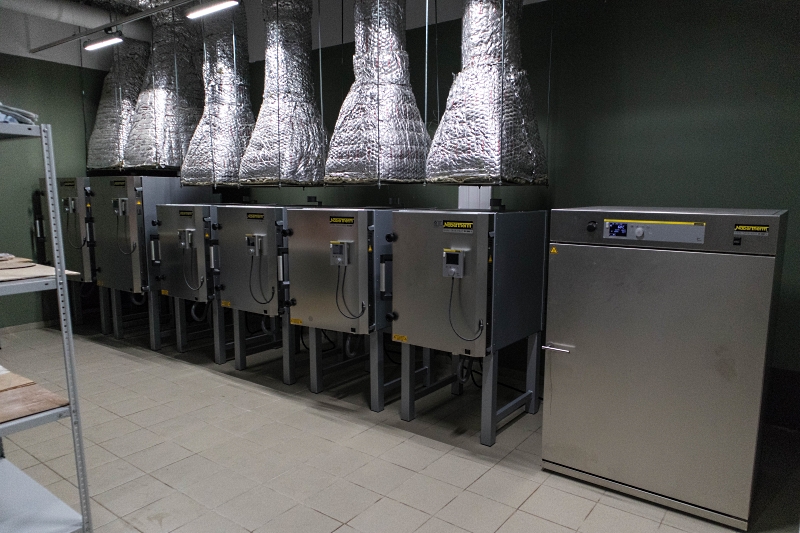
Next in line is the space “Polygons” with plants, modern art and information technology. At the special racks are growing student work.
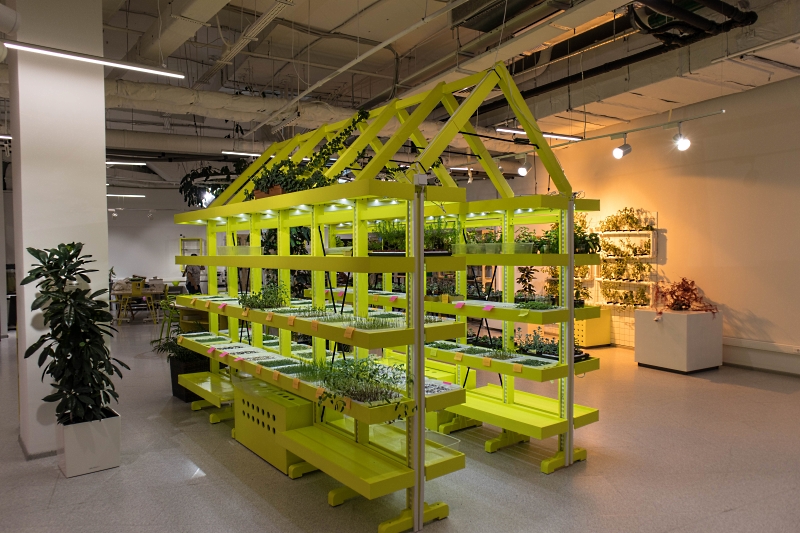

The compartment dedicated to hydroponics is covered with plastic curtains to maintain the microclimate. Here are the most common systems.
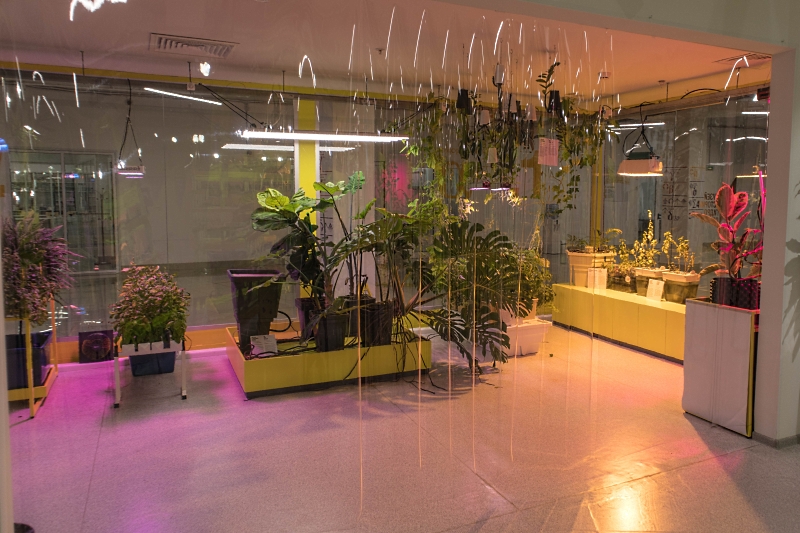
The wick system simultaneously demonstrates the ability of plants to determine local gravity and grow upwards. An excellent addition would look klinostat , maybe in the future will add.
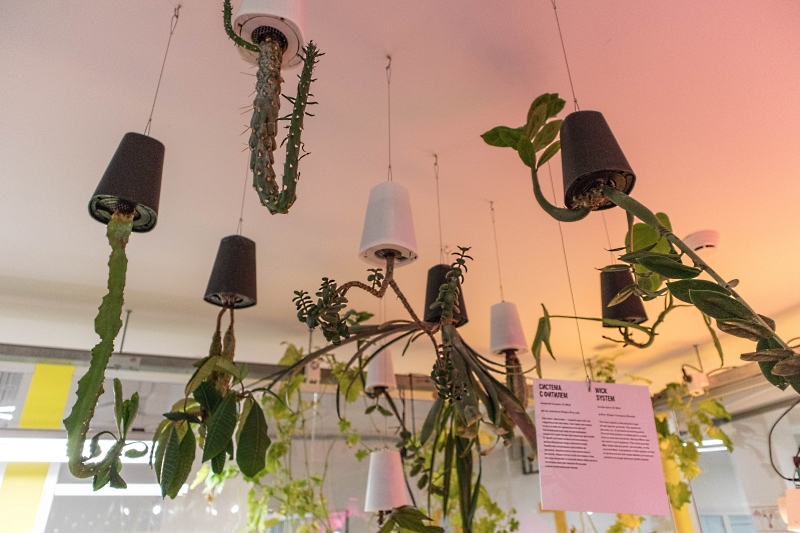
Stands with plants a lot, and different.
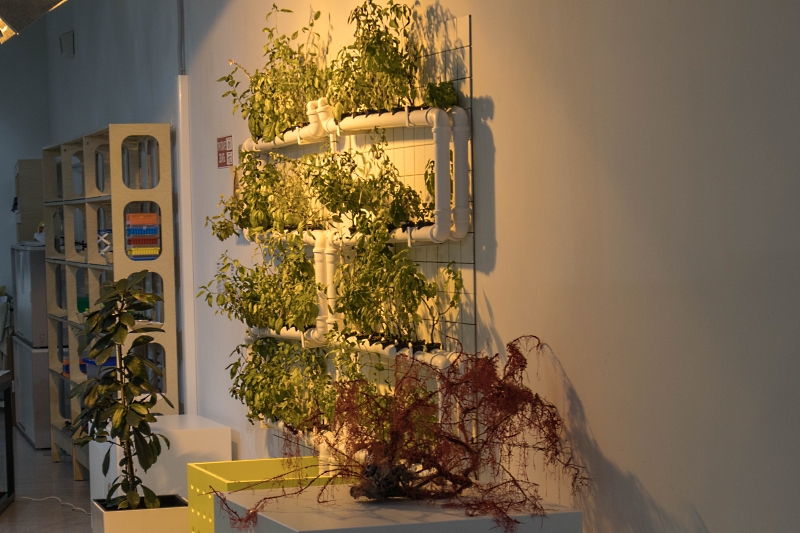
One of the walls is highlighted by modern art. This installation, for example, is inspired by the works of Pavlov, not alive, but reacting to the movement.

The next sector is dedicated to human-machine interaction. There is a booth with an emotional intelligence trainer, stands controlling the look and even breathing.
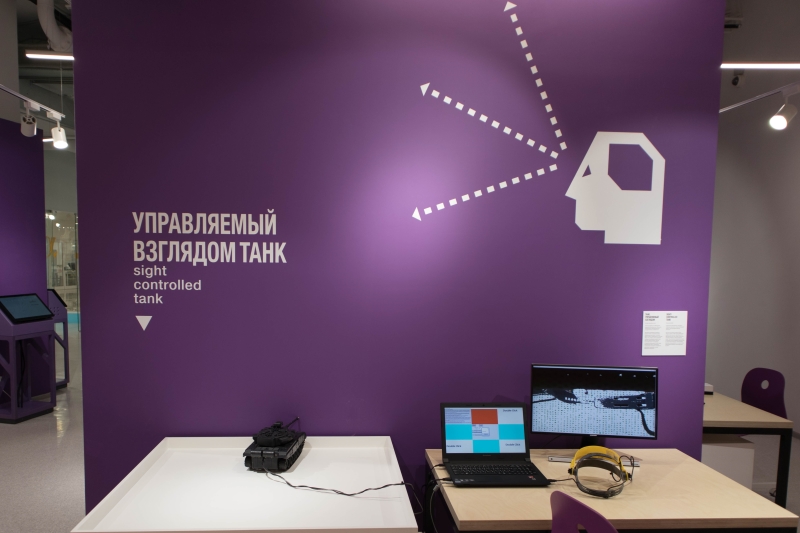
A pretty stand shows the life of a cell on a spherical screen with a flat cut.
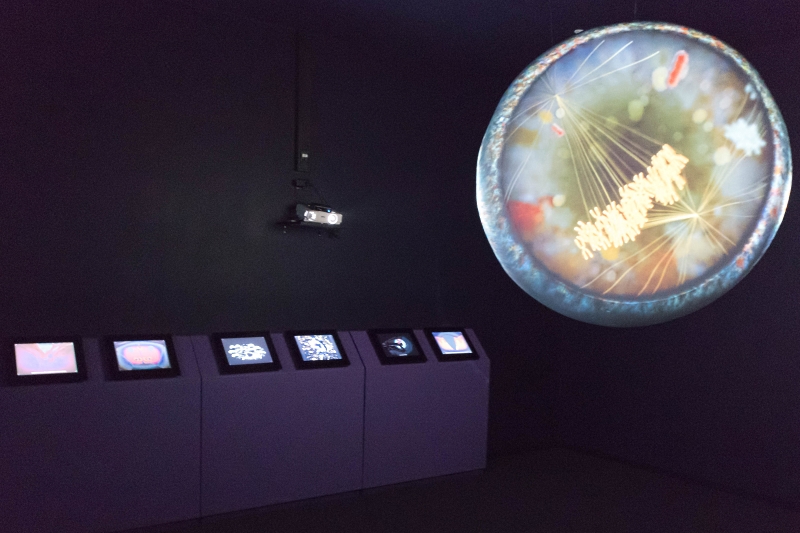
Smart home is presented in the form of, literally, a hut on mechanical legs.
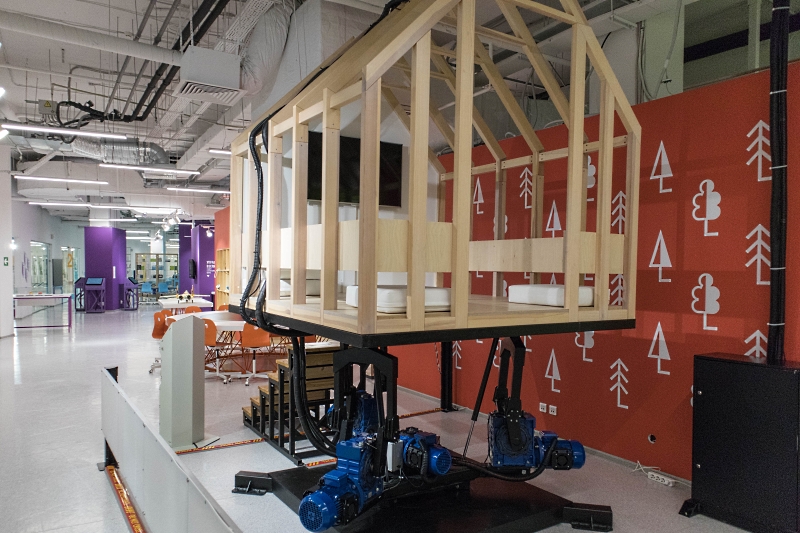
Holographic pigs illustrate the operation of a system capable of understanding and answering a question asked in a free form.
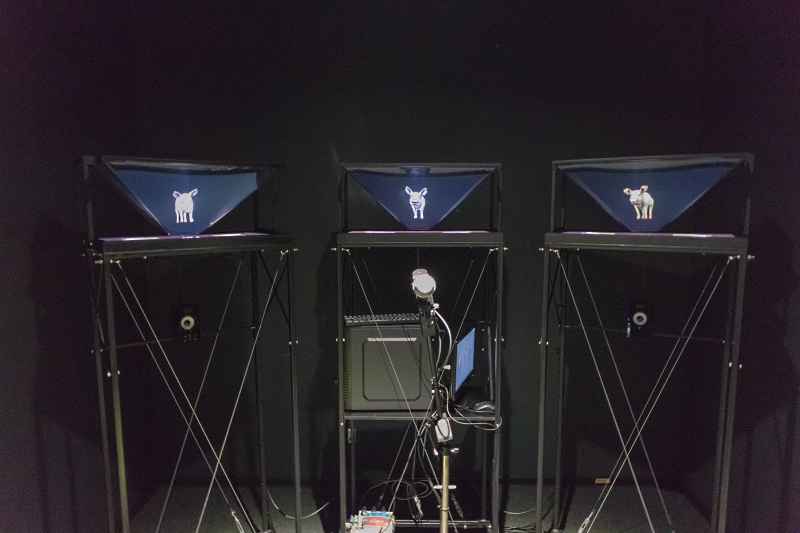
At the laboratory of biohacking and molecular biology, you can only look outside, but, thanks to the glass walls, this is enough. A lot of equipment - there is even a DNA sequencer.
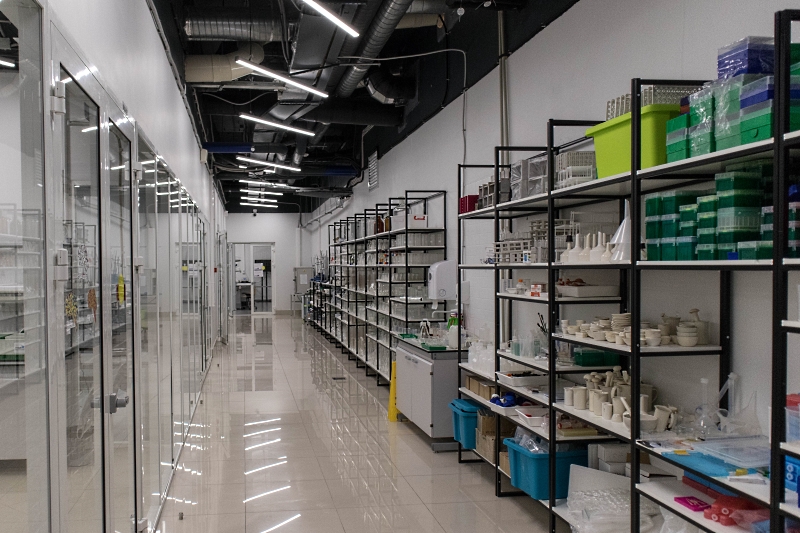
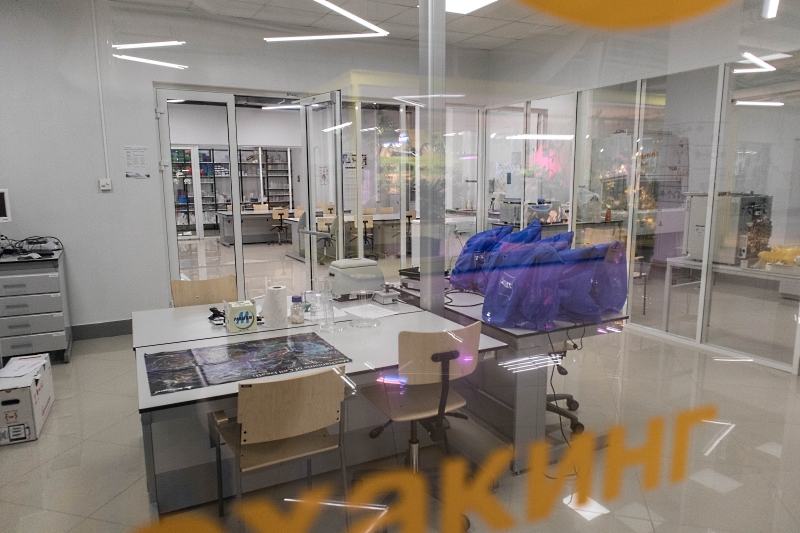
Well, the last point of our tour is the exposition “Smart City”, created with the participation of the Moscow government. Here, in the form of visual games for children, modern concepts are shown. Here, for example, a stand illustrating the work of Big Data.
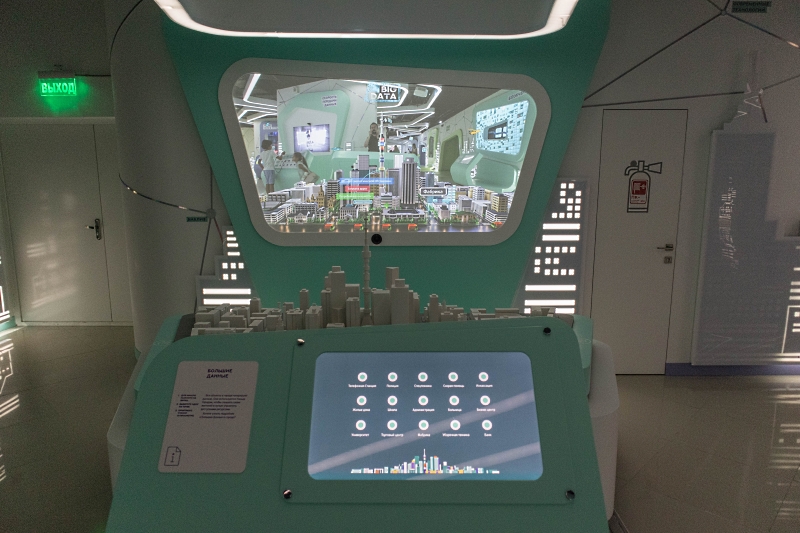
And here you can jump on interactive aerobics and find out how smart sensors can be useful.

By the time the little guests grow up, the “diagnosis of the future” will at least partially become the “diagnosis of the present.”
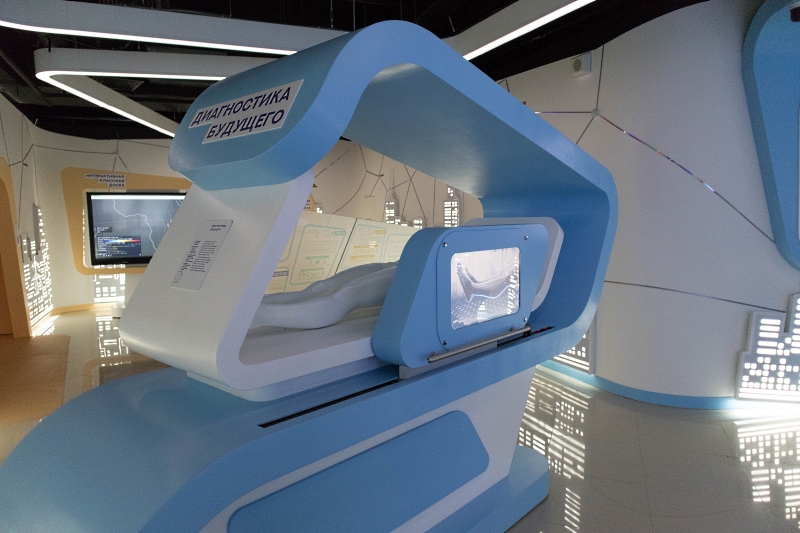
In “Sirius” there are programs of different duration, orientation (in three directions: “Science”, “Art” and “Sport”) and for different ages. I was invited to a vacation program lasting one week, for ages 12-15 years. For six days and twenty hours, students must make a project that will defend itself in the final. I have not taught since 2012, and the students there were older, but, fortunately, the space school has been working in Ufa for many years , and the head of which, Alexei Allikas, can be asked for advice. As a result, on the basis of what I can do (for example, I didn’t work with the hardware and I would not be able to teach the satellite) and the teaching experience in similar conditions formed a program consisting of the following parts:
If you want to learn how to fly in the Orbiter, check out my publications:
The models were supposed to be made of paper at first, and I spent a lot of time rejecting those that are not suitable because of too much complexity or laboriousness, but, having learned in time about the presence of 3D printers in the center, I switched to searching for models for which there are interesting add-ons in orbiter. There were four of them - the Soyuz spacecraft and the scenario of manual docking with the ISS, the Vostok spacecraft and the manual orientation of the spacecraft for landing, the Proton and access to the geostationary orbit and the Mars Reconnaissance Orbiter with aerial braking at Mars.
Printed models, from this grow “Proton”.

Projects protect all areas of vacation programs at the same time in the main hall. This is good - the result of training is shown not only to their parents, but also to participants in other programs with their parents. This is where my students join the Soyuz.
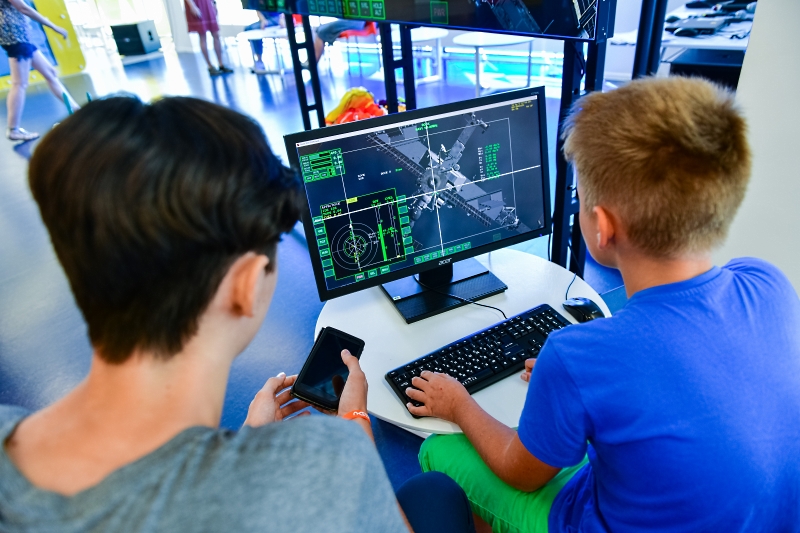
The pottery program showed win-win seals, everyone loves them.

“Step to the Universe” (8-11 years old) demonstrated missiles. Alas, the practical start-up in the hall can not be held, so that it was carried out separately.
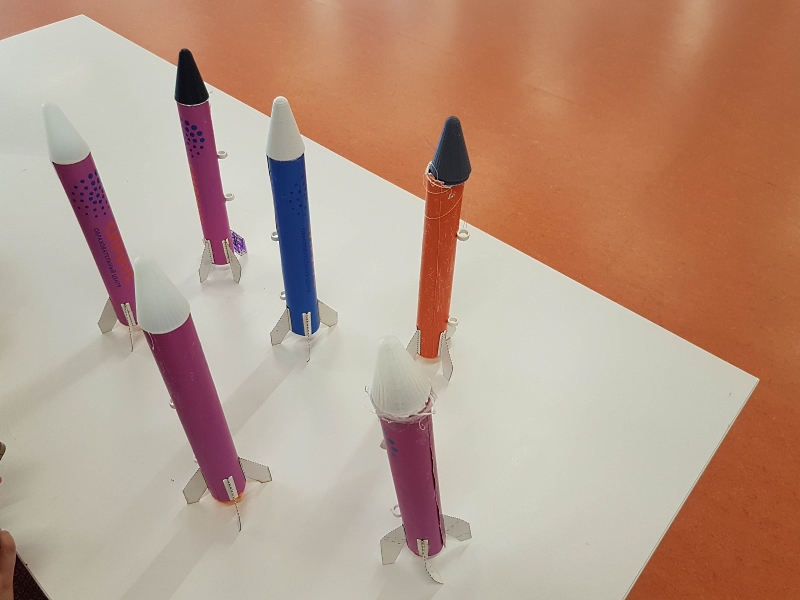
Chemical and physical experiments of the group of 12-15 years.
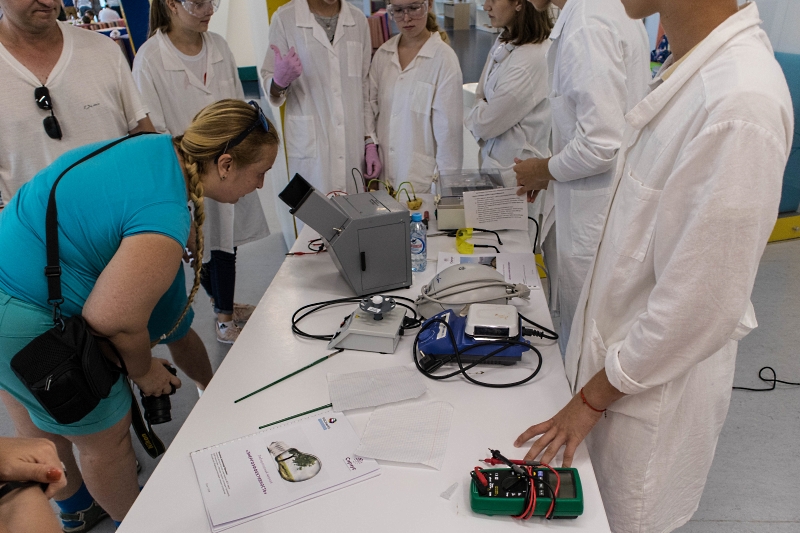
The buoyers created at the “school of digital production” in the hall without the wind, alas, did not go, but they still looked pretty.
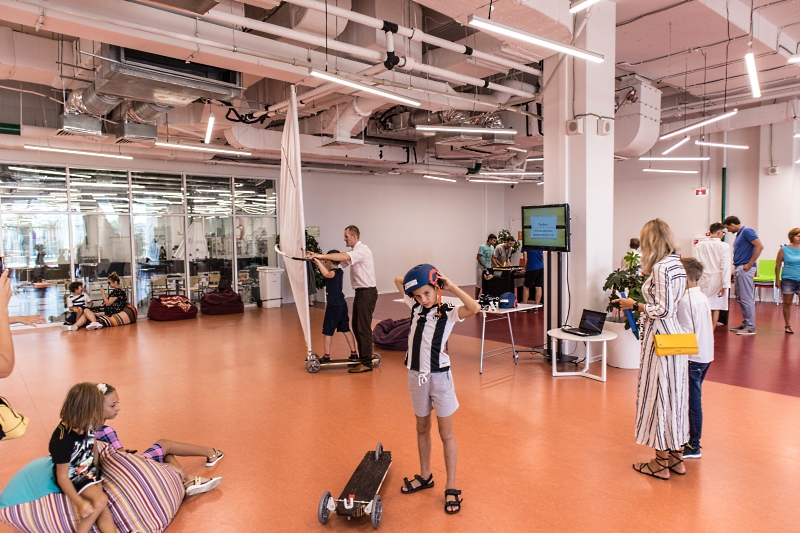
But the most entertaining demonstration was at the school of robotics (8-11 years old). The children collected and programmed the robot all week, and full-fledged competitions were held on defense with the issuance of diplomas based on the results.
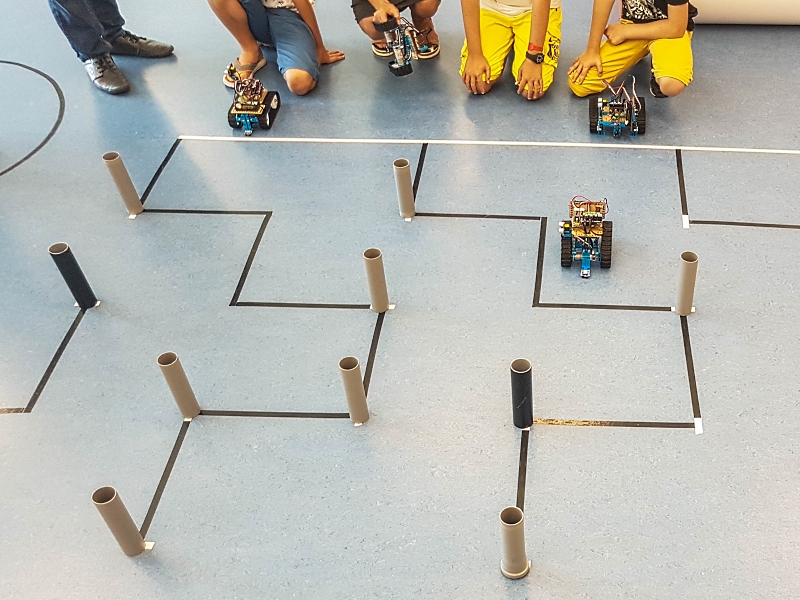
Personally, I consider the main positive result of my work that the students themselves voluntarily wanted to fly and show their skills. It is hoped that they will put the Orbiter at home and will play, while simultaneously studying the real orbital mechanics, astronomy and space technology. And the fact that already saying goodbye, some students called my discipline the most interesting (and all programs were shown master classes in other areas) was the pinnacle of pedagogical joy.

The residential complex “Sirius” is a former four-star hotel Azimut with the appropriate level of rooms. In the first minutes of check-in it was funny to realize that the number is completely analogous to the Tyumen four-star hotel, where I was at Neforum bloggers.
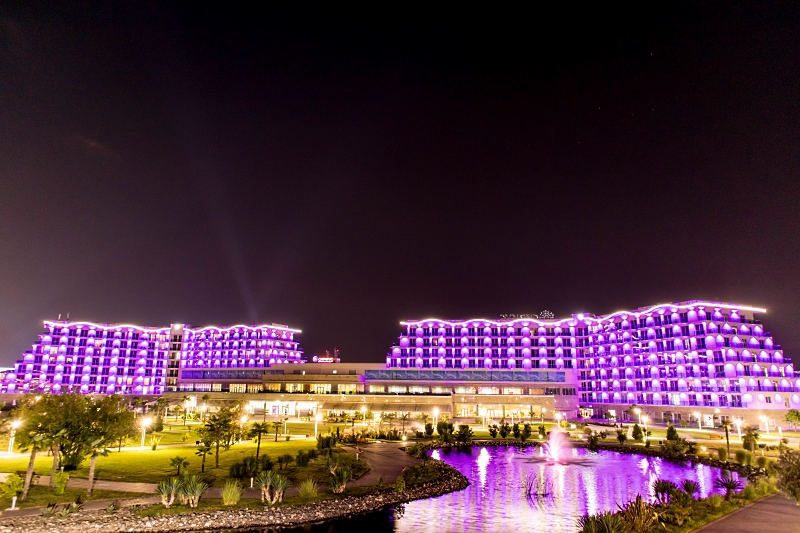
The location is beautiful, 300 meters from the sea, in case of bad weather there is a swimming pool and spa. In the right part of the photo is a science club. Also on the territory there is a pond with a fountain, contributing to scientific thinking, simulators and tennis courts temporarily closed for repair.
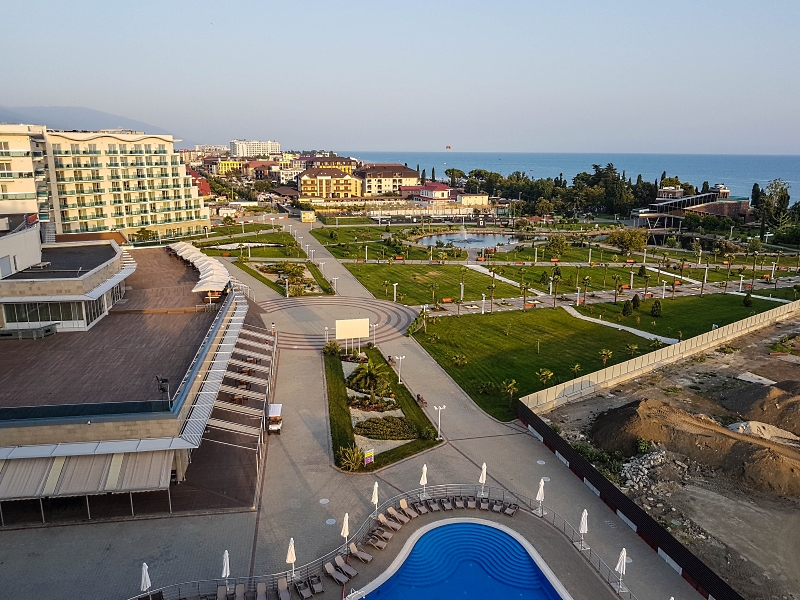
Very close to the facilities of the 2014 Olympics.
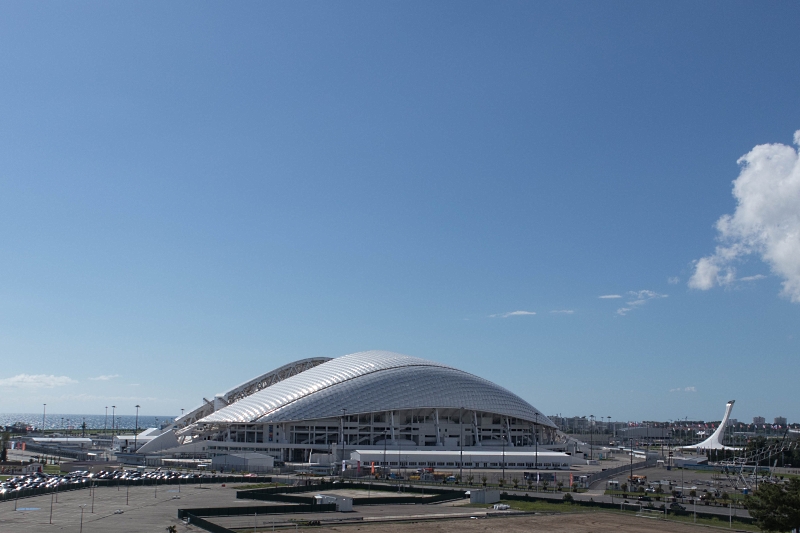
In addition to the residential complex and the Park of Science and Arts, sports activities are held at the Puck Arena. Electric shuttle buses run between the buildings.
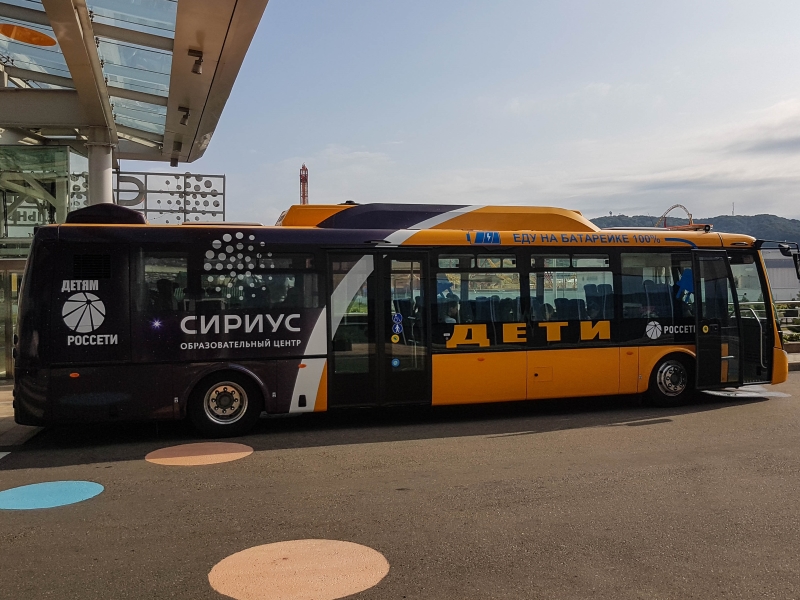
I also brought a monowheel by a transport company (on an airplane) and rode it.
The educational center “Sirius” makes a very inspiring impression. The combination of excellent educational and household equipment with people who love and know how to do their work, gives confidence in the future of students and the country as a whole. It was a great honor for me to work there and make a small contribution to making our common tomorrow better.

Excursion
The science and art park of the educational center “Sirius” is located in the building of the former Main Media Center of the 2014 Olympics and is comparable in size to a rather big plant - the width of the facade is four hundred meters, and the scale is best seen in the satellite image.

Pay attention to the dark stripes - this is the glass roof of the galleries. In 2017, a 0.03 product was installed at the main entrance - the Burana complex test stand.

“Complex booth” means that this instance was equipped with a standard set of equipment and conducted a huge amount of testing, catching 21,168 bugs.

OK-KS - one of the best-preserved ships and program layouts. For example, “Buran” on VDNH is assembled from three different products. And here except that the absence of thermal protection and orientation engines is striking. For convenience of testing, several manholes were made in the stand, which were absent in flight copies. One of them is located in the wheel housing and is closed with a padlock.

In the left (north) vestibule next to the abstract satellite mockup is the mockup of the second-stage engine (central unit) of the RD-0120 booster rocket. The center is actively filled with expositions and various artifacts, for example, the white border on the left was the entrance to the module of geospatial technologies, which is replaced by “Genetics and Life Sciences”.

We rise to the second floor. Here are the planetarium and the full-size layout of the Clipper spacecraft.

View of the "Clipper" from behind.

There is still plenty of space, and the second floor is subtly similar to the airport. Glare tile floor create the illusion of the pool.

The industrial scale of the premises allows for events with hundreds and thousands of participants.

Go back to the first floor. The diagram of the audience once again clearly shows the size of the center. Alpha - biohacking laboratories and nanotechnologies, Beta prototyping, circuit engineering, space and vehicles, Gamma - painting, pottery and mosaic, Delta - audiences and conference rooms, Sigma - exhibitions.

We begin, of course, with space laboratories. In the corridors are models - icebreakers, reactors, "Luna-16", "Energy", "Soyuz", "Proton" and "Angara".

Autographs of cosmonauts who visited the center.

Surprise and admiration causes equipping laboratories in general, and space - in particular. With the help of Sputnix, they installed complete equipment for testing spacecraft. Two stands allow you to check the orientation systems - a simulator of a magnetic field and a searchlight playing the role of the Sun, create an environment similar to what the satellite will collide in orbit, and the aerosolve simulates conditions when the satellites turn in weightlessness.

Aerostol removes friction in two planes, allowing you to experiment with the operation of satellite engines.

And this is a stand with engines on compressed gas, which moves along the aerostol.

Thermal chamber allows you to check the readiness of the satellite to work in a vacuum.

Shaker - the load when removing the satellite on the launch vehicle.

From the project shift, which lasts a month, remained mock satellites. Wooden shells on adhesive tape with hot melt do not reduce the value of the knowledge and experience gained on real electronics. And after visiting this laboratory, you are not surprised at the news about the launch with the ISS created by students of “Sirius” and tested on this very equipment of real satellites.

Go to the prototyping lab. Here you can quickly and in various ways realize some great idea in the material. 3D printers, a whole battery, and, as I did not pass by, at least one of them constantly printed.

In some cases, it will be better to cut a part than to print, for this there is a high-precision CNC engraving-milling machine.

The alternative is a laser cutting machine, wooden parts with characteristic dark edges are everywhere, it obviously works a lot.

A local landmark is a homemade 3D clay printer. As I was told, they tried to print it with food, but something normal turned out so far only with chocolate.

On the shelves are experiments with rare delta kinematics of 3D printers.

Go to the pottery lab. Here are the results of 3D clay printing, demonstrating the possibility of creating objects with a complex surface.

On a close-up, the layers with which the material was applied are clearly visible.

The audience with pottery circles.

The results of a more traditional production process. Cute seals and a plate with the words "There is no sense in fear of heights, it makes sense to learn to fly."

Production is almost waste-free - unsuccessful experiments can be loaded into a machine similar to a meat grinder, and turned into a homogeneous mass, from which to sculpt something new.

And here the products are dried (the extreme closet on the right) and burned (all the rest).

Next in line is the space “Polygons” with plants, modern art and information technology. At the special racks are growing student work.


The compartment dedicated to hydroponics is covered with plastic curtains to maintain the microclimate. Here are the most common systems.

The wick system simultaneously demonstrates the ability of plants to determine local gravity and grow upwards. An excellent addition would look klinostat , maybe in the future will add.

Stands with plants a lot, and different.

One of the walls is highlighted by modern art. This installation, for example, is inspired by the works of Pavlov, not alive, but reacting to the movement.

The next sector is dedicated to human-machine interaction. There is a booth with an emotional intelligence trainer, stands controlling the look and even breathing.

A pretty stand shows the life of a cell on a spherical screen with a flat cut.

Smart home is presented in the form of, literally, a hut on mechanical legs.

Holographic pigs illustrate the operation of a system capable of understanding and answering a question asked in a free form.

At the laboratory of biohacking and molecular biology, you can only look outside, but, thanks to the glass walls, this is enough. A lot of equipment - there is even a DNA sequencer.


Well, the last point of our tour is the exposition “Smart City”, created with the participation of the Moscow government. Here, in the form of visual games for children, modern concepts are shown. Here, for example, a stand illustrating the work of Big Data.

And here you can jump on interactive aerobics and find out how smart sensors can be useful.

By the time the little guests grow up, the “diagnosis of the future” will at least partially become the “diagnosis of the present.”

Job
In “Sirius” there are programs of different duration, orientation (in three directions: “Science”, “Art” and “Sport”) and for different ages. I was invited to a vacation program lasting one week, for ages 12-15 years. For six days and twenty hours, students must make a project that will defend itself in the final. I have not taught since 2012, and the students there were older, but, fortunately, the space school has been working in Ufa for many years , and the head of which, Alexei Allikas, can be asked for advice. As a result, on the basis of what I can do (for example, I didn’t work with the hardware and I would not be able to teach the satellite) and the teaching experience in similar conditions formed a program consisting of the following parts:
- Theory: an introduction to astronautics and astronomy, orbital mechanics, the history of astronautics.
- Practice: flying in the space simulator Orbiter with a consistent increase in complexity. First, we look at flights without active control, at the same time studying the work of space technology and acquiring basic skills, then we perform simple and more and more complex flights.
- Project: assembling a model of a spacecraft and performing a flight on it in Orbiter.
If you want to learn how to fly in the Orbiter, check out my publications:
- View scripts without piloting .
- Simple flights: geostationary orbit , flight to the ISS with docking , landing .
- Difficult flights: Jupiter , Moon , Mars , Mars-Earth flight .
- All materials on the Orbiter .
The models were supposed to be made of paper at first, and I spent a lot of time rejecting those that are not suitable because of too much complexity or laboriousness, but, having learned in time about the presence of 3D printers in the center, I switched to searching for models for which there are interesting add-ons in orbiter. There were four of them - the Soyuz spacecraft and the scenario of manual docking with the ISS, the Vostok spacecraft and the manual orientation of the spacecraft for landing, the Proton and access to the geostationary orbit and the Mars Reconnaissance Orbiter with aerial braking at Mars.
Printed models, from this grow “Proton”.

Projects protect all areas of vacation programs at the same time in the main hall. This is good - the result of training is shown not only to their parents, but also to participants in other programs with their parents. This is where my students join the Soyuz.

The pottery program showed win-win seals, everyone loves them.

“Step to the Universe” (8-11 years old) demonstrated missiles. Alas, the practical start-up in the hall can not be held, so that it was carried out separately.

Chemical and physical experiments of the group of 12-15 years.

The buoyers created at the “school of digital production” in the hall without the wind, alas, did not go, but they still looked pretty.

But the most entertaining demonstration was at the school of robotics (8-11 years old). The children collected and programmed the robot all week, and full-fledged competitions were held on defense with the issuance of diplomas based on the results.

Personally, I consider the main positive result of my work that the students themselves voluntarily wanted to fly and show their skills. It is hoped that they will put the Orbiter at home and will play, while simultaneously studying the real orbital mechanics, astronomy and space technology. And the fact that already saying goodbye, some students called my discipline the most interesting (and all programs were shown master classes in other areas) was the pinnacle of pedagogical joy.

Household part
The residential complex “Sirius” is a former four-star hotel Azimut with the appropriate level of rooms. In the first minutes of check-in it was funny to realize that the number is completely analogous to the Tyumen four-star hotel, where I was at Neforum bloggers.

The location is beautiful, 300 meters from the sea, in case of bad weather there is a swimming pool and spa. In the right part of the photo is a science club. Also on the territory there is a pond with a fountain, contributing to scientific thinking, simulators and tennis courts temporarily closed for repair.

Very close to the facilities of the 2014 Olympics.

In addition to the residential complex and the Park of Science and Arts, sports activities are held at the Puck Arena. Electric shuttle buses run between the buildings.

I also brought a monowheel by a transport company (on an airplane) and rode it.
Conclusion
The educational center “Sirius” makes a very inspiring impression. The combination of excellent educational and household equipment with people who love and know how to do their work, gives confidence in the future of students and the country as a whole. It was a great honor for me to work there and make a small contribution to making our common tomorrow better.
